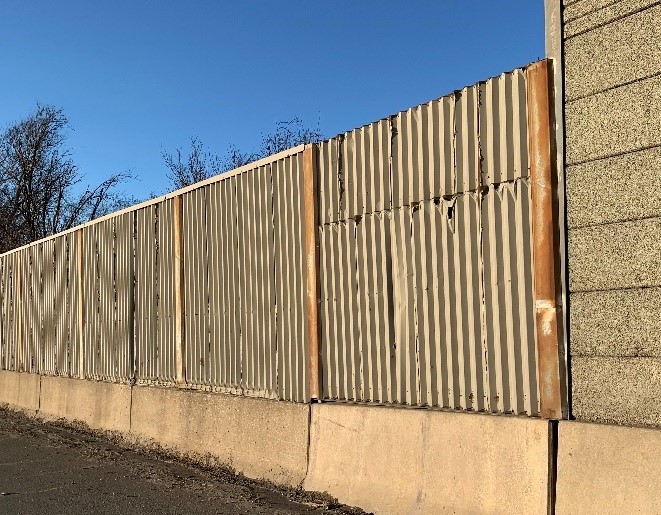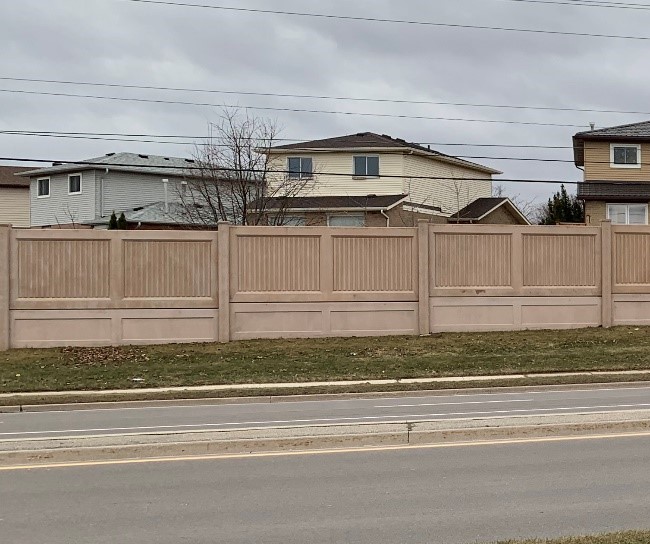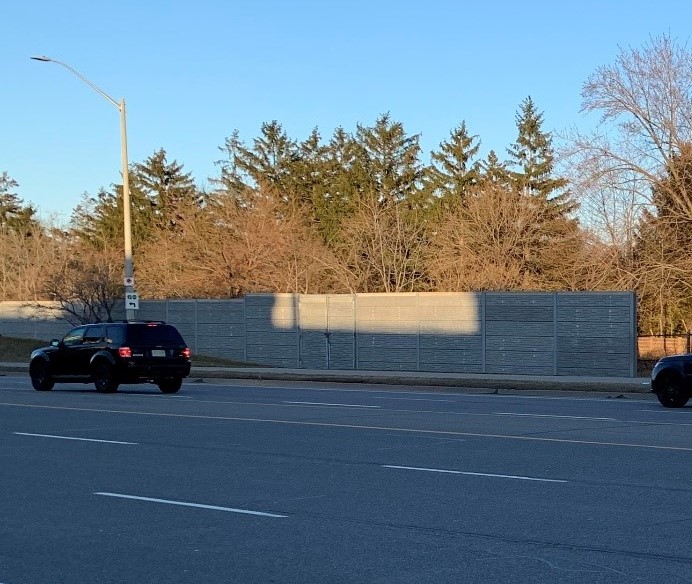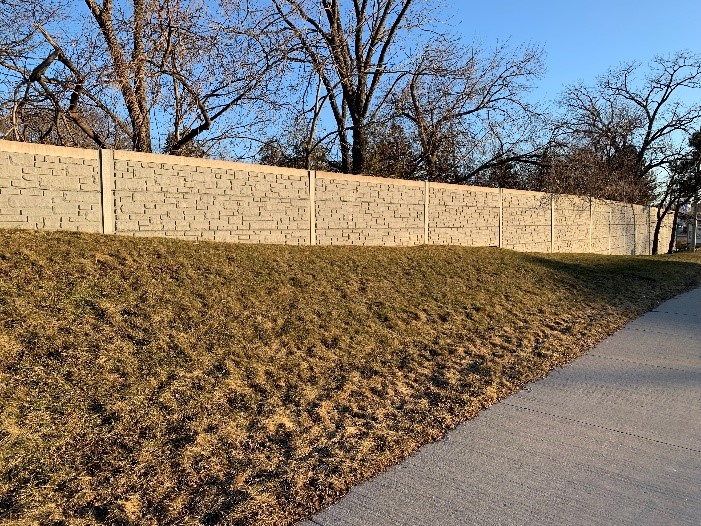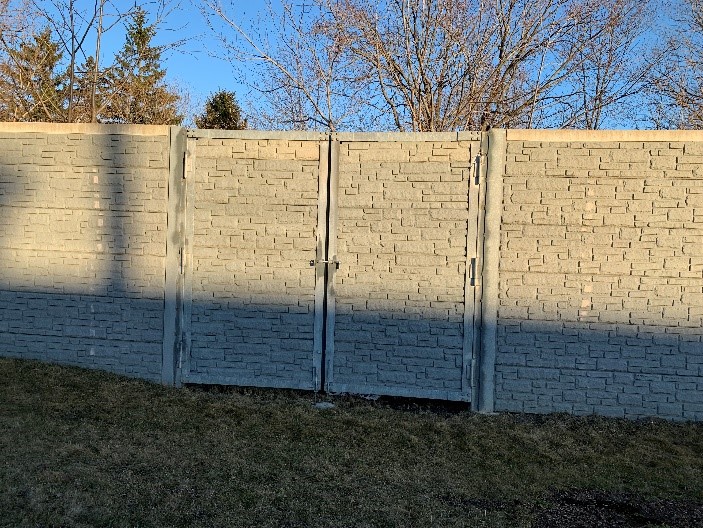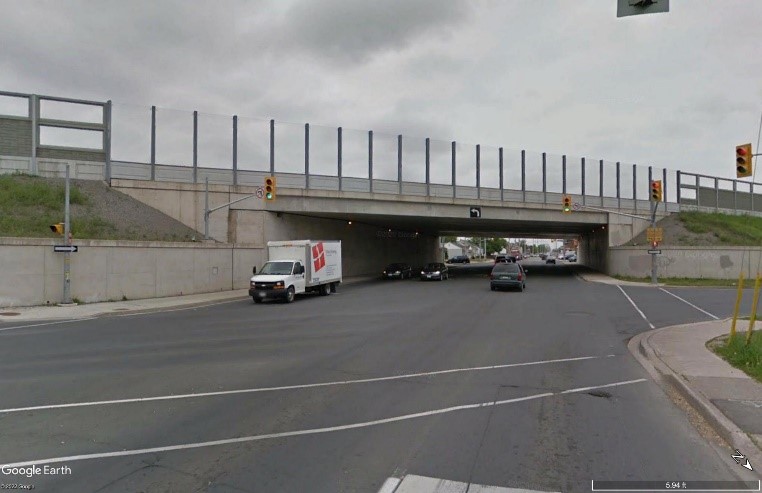As highways get bigger and busier, they also get louder. Living close to transportation infrastructure is great, but it also comes with the inconvenience of noise. Here’s how we fix that.
Highways are a significant source of noise, which can vary depending on traffic volume, speed limit, type of pavement, temperature, and even air density. Noise is emitted from the tires rolling on the pavement and by the engines and mufflers (insert electric vehicle promo here). In comes the sound wall (see Figure 1).

The sound wall is a 40-year-old concept tracing its beginnings to 1972, when the Environmental Protection Agency in the United States passed the Noise Control Act regulating noise pollution. This required construction projects and infrastructure developments to consider the noise generated by these new projects during construction and during service life.
Noise is measured in decibels (also the name of a great AC/DC song). Zero decibels (dB) is the approximate threshold of human hearing. A conversation with someone from across the table is about 50 decibels. Highway traffic generates decibels well in excess of this.
When discussing sound, we talk about the source (generating noise, like an airport runway) and the receiver (what we are trying to protect from the noise, like a residential neighborhood).
Sounds walls are very simple in nature. They affect sound in three ways: they reflect the sound (the sound bounces off and redirects), absorb the sound (muffle it), and/or transmit the sound (the sound goes through the wall). The taller the wall, the more effective it is because the sound has to travel up and over the wall, increasing the travel distance between the source and the receiver (see Figure 2).
There are many different materials used for sound walls. The most common are precast concrete panels for sound reflection, cement-bonded wood fibre boards for sound absorption, and different types of metal panels for something in between.
Metal panel walls are light and easy to build since they don’t need much heavy equipment support. They do require more framing since the panels themselves don’t have much strength. They are typically corrugated, which provides some sound-absorption capability (see Figure 3).
Precast sound walls are limited in height — 2 to 3 metres tall — because they are very heavy. They do last longer and since the panels are structurally stronger, the foundation posts can be spaced further apart — around 4.75 metres. But due to their weight, the foundations need to be deeper, all of which affects cost. And as we all know, “Money Talks” (another great AC/DC song)! See Figure 4 for some precast concrete sound walls.
The most common highway sound walls, however, are cement fibre board walls because they reduce noise significantly by absorbing sound. They are more expensive than concrete walls. But they also don’t really have a height limit since they are much lighter than their counterparts. And the taller the wall is, the more effective it is (see Figure 5).
Sound walls aren’t just along highways. Several main roads in Burlington have precast concrete sound walls. Fairview Street has several across from the Walmart and GO train station, shielding the residential neighborhood to the south (see Figures 6 and 7).
When a highway goes through a residential neighborhood, it is often flanked by cement fibre board sound walls to reduce the noise level on both sides of the wall. If concrete walls were used, they would amplify the sound on the highway, reflecting it back to the drivers from both directions (see main photo and Figure 8).
Some walls need to be very high to shield residential neighborhoods from highway noise. Tall walls, however, sometimes have a negative visual impact on the neighborhood. To reduce the impact, some walls have transparent panels to improve visibility and reduce the shade the wall projects (see Figure 9 courtesy of Google Earth).
Sound walls aren’t the prettiest, but they do increase the quality of life for those who live near highways and busy streets. So next time you drive on the highway, take notice of all the sound walls. Can’t drive with them, can’t drive without them!
Fun Fact
Electric vehicles are so quiet that in Europe and Australia, laws were passed requiring electric vehicles to emit an external noise (Acoustic Vehicle Alert System, or AVAS) when travelling at less than 20 km/h. This helps the visually-impaired to hear the vehicle close by and reduces pedestrian-vehicle collisions involving distracted texters on their phones!
Have you seen an interesting building or piece of infrastructure in or around Burlington that you’d like Eric Chiasson, your personal engineer, to write about?
Send us your suggestions, comments, or questions to articles@local-news.ca and we’ll see what Eric can find out!
Sources:
Built: The Bluebeam Blog. There’s More to Highway Noise Barriers Than Meets the Eye — or Ear. Url: https://blog.bluebeam.com/highway-noise-barrier-materials-design/ (accessed Apr. 3, 2022).
Sema Precast. Architectural Post and Panel Sound Wall Systems. Url: https://semaprecast.com/sound-walls/ (accessed Apr. 3, 2022).
Durisol Noise Barriers. Main page. Url: https://www.durisol.com (accessed Apr. 3, 2022).
99 Percent Invisible. Building the Wall: Highway Sound Barriers and the Evolution of Noise. Url: https://99percentinvisible.org/article/building-wall-highway-sound-barriers-evolution-noise/ (accessed Apr. 3, 2022).
Tree Hugger. Quietest Cars: Do Electric Cars Make Any Sound. Url: https://www.treehugger.com/do-electric-cars-make-noise-5205280 (accessed Apr. 3, 2022).
For more information on the author: https://www.linkedin.com/in/eric-chiasson-10601082




